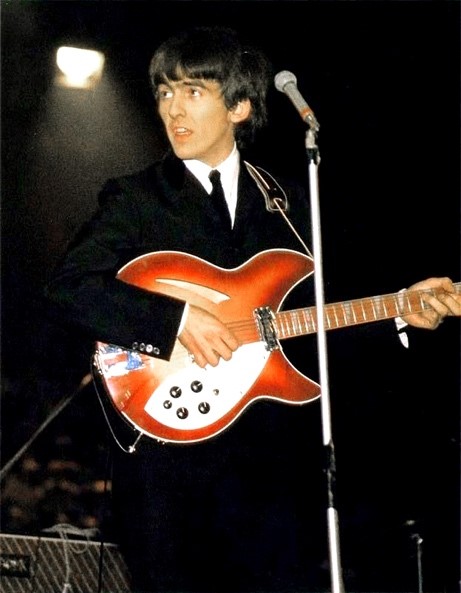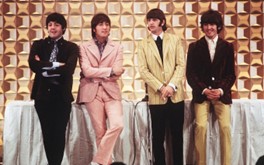Before the Beatles emerged in the mid 1960’s rock and roll was already at the center of the cultural conversation, but their rise changed the game of music and popular culture. The Beatles shifted the boundaries of rock and roll, changed how music was produced in the ’60s, and birthed a youth culture.
Prior to the Beatles’ rise to cultural dominance in the 1960’s, all music was recorded on two tracks (think: pieces of tape going into a tape recorder). The Beatles began to pilot the new 4-track recording on their single “I Want to Hold Your Hand” in 1963. This began a new style of multitrack recording—where sounds could be layered, which encouraged experimentation and avant-garde sounds. The Beatles pushed the limits further with their studio album Abbey Road, where they used a new type of multitrack recording machine. As Paul McCartney described the group’s recording process: "We would say, ‘Try it. Just try it for us. If it sounds crappy, OK, we'll lose it. But it might just sound good.’ We were always pushing ahead: Louder, further, longer, more, different.”
The Beatles also used their recording sessions as a chance to experiment. When they started recording, the industry standard was for groups to come to the studio and record the album as a performance: A group would do full takes of songs until the engineer was happy with the material, recording an entire album in a few hours. But the Beatles utilized their weeks in the studio to create songs from the ground up. They explored the limits of technology by splicing tape together, layering, and running it backwards through the machines, creating a novel sound that didn’t replicate their live performances. The song “A Day In the Life” from the album Sgt. Peppers Lonely Hearts Club Band is the most notable for its use of these new techniques—the song features a 40-piece orchestra and a hair-raising, sustained piano chord. The famous final piano chord in the song is sustained for over 40 seconds, creating an eerie, lingering effect. It was achieved by layering multiple pianos and using studio tricks, contributing to the overall mystique of the song.
As the 1960s began, rock was losing its footing in popular culture as its original stars moved away from the genre: Elvis was in the army, Buddy Holly had died, and Little Richard was pursuing a gospel music career. As the Beatles pushed the boundaries of their recording technology, they changed what rock was as well, bringing new life to a genre nearing obsolesce. Mark Kemp, a music journalist, attributes the Beatles to trailblazing the diversification of rock-pop music, venturing into genres like world music, psychedelia, avant-pop, and electronica. Alongside the Byrds, the Beatles are credited with kickstarting the popularity of the "jangly" sound associated with jangle pop, which drew in a new bohemian audience previously more interested in jazz and folk. George Harrison's utilization of the Rickenbacker 360/12 guitar during the recording of “A Hard Day's Night” played a pivotal role in promoting the guitar, and the distinctive jangly sound became so prominent that it was dubbed the Beatles’ “secret weapon” by the British magazine Melody Maker. In 1964, a meeting between the Beatles and folk musician Bob Dylan led to a mutual exchange of musical elements, influencing both parties’ genres. This collaboration left a lasting mark on the emerging folk rock movement of the mid ’60s. Music historian Andrew Grant Jackson highlights the significance of Harrison's twelve-string guitar in “A Hard Day's Night” as the catalyst for the inception of the folk-rock sound. Throughout their rise to stardom, the Beatles consistently crossed the borders of rock and roll, and then brought the genre with them.

The rise of the Beatles was the first time popular culture coalesced around what youth were interested in. Before this, “the young” were not seen as a block of consumers or something to be marketed towards. In the ’60s, the Baby Boomer generation, then in their teens, had enough members, shared attitudes, and spending money to be viewed as a singular cohort, a collective consciousness.
For the youth of the ’60s, the Beatles’ music and persona embodied a spirit of rebellion and liberation. Their lyrics often explored themes of individualism, love, and freedom, resonating with the aspirations and frustrations of the youth. The band’s rejection of conformist norms and their embrace of a more open and expressive lifestyle became symbolic of the counterculture movement. Moreover, the Beatles’ rejection of traditional norms extended to an anti-establishment attitude. This resonated with the anti-authoritarian sentiments of the 1960s youth, who were questioning societal norms, political authority, and the conservative values of the previous generation.

The band’s distinctive fashion sense—characterized by the “mop-top” hairstyles, collarless suits, and colorful attire—became a style statement for the youth. The Beatles’ influence on fashion extended beyond clothing to hairstyles, influencing a generation to adopt a more casual and individualistic approach to personal style.
The Beatles were vocal about social and cultural issues, from advocating for peace to rejecting racial segregation. Their engagement with these topics in their music and public statements encouraged a sense of social consciousness among their young audience, inspiring many to become more politically and socially active.
The Beatles’ popularity transcended national boundaries, contributing to the globalization of youth culture. Their music and image became symbols of a shared experience for young people worldwide, fostering a sense of unity and interconnectedness among the global youth community.
Overall, The Beatles were more than just a musical phenomenon; they were cultural icons who spoke to the aspirations and values of the 1960s youth. The Beatles changed the boundaries of rock & roll, how music was produced in the ’60s, and triggered the coalescence of an entire generation, creating ripples for decades to come.
—Di Carey